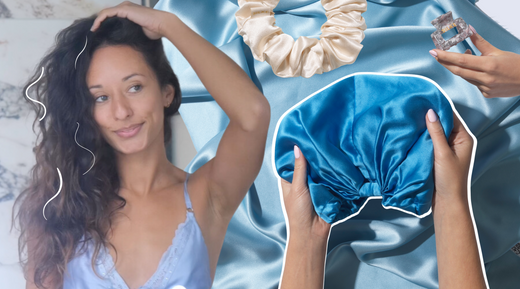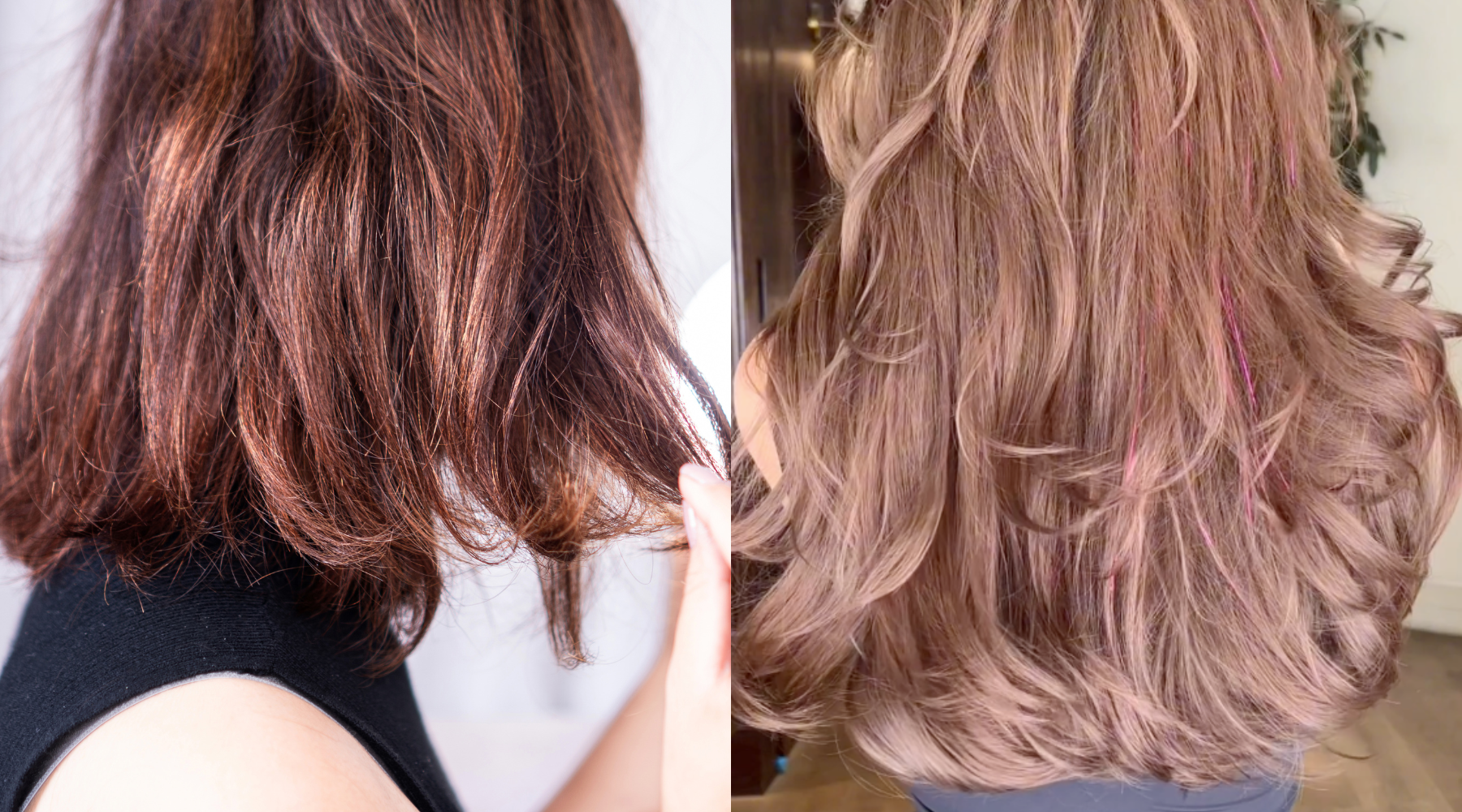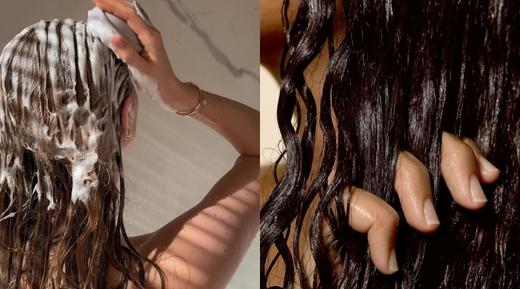
Hair Routine For Wavy Hair Types
Time and time again, we see the online debate, calling for what should be classed as wavy hair and what should be called curly hair. Luckily, SILKE London’s co-founder, Maria Sotiriou, hair expert and stylist with over 37 years of industry experience, is on hand to help explain the differences, identify your hair type, and make it a whole lot easier to understand and treat your hair and its specific needs.
Understanding Your Hair Type
As soon as you understand your hair type, everything else falls into place! Maria explains: “There are 4 basic hair types, 1(a,b,and c), 2(a,b,and c), 3(a,b,and c) & 4(a,b,and c). Number 1 represents straight hair, through to 4 which is the tight coily hair. The a,b and c next to the number represents the gradual increase of curl from one number through to the next number. Straight hair is at number 1, then, as you ascend through the numbers, the tighter the curl becomes. For example, waves are a 2, curls are a 3, and coils are a 4.
Straight Hair (Type 1): Generally no undulations or movement throughout the hair strand.
Wavy Hair (Type 2): The hair doesn’t curl back around but drops into a bend, forming an ‘S’ shape down the hair shaft.
Curly Hair (Type 3): The hair curls around but drops when moving into the next curl, forming a loose corkscrew shape.
Coily Hair (Type 4): The curl rotates in a tight spiral and sits very close to the one below it, forming a tight coil shape.
Wavy hair generally is classified as 2a, 2b and 2c. The classification that comes before is straight hair 1a, 1b and 1c, so it’s very common for wavy hair to be mistaken for frizzy straight hair. Hair that is long and heavy can easily be mistaken for straight hair with frizz, and it’s only when it is cut shorter with layers, allowing it to move more freely, so the natural waves have the opportunity to form. Hair that is 2a is the least wavy, 2B is slightly more wavy, then 2c is the most wavy."
It is common to have a different curl pattern in different areas around the head. The most common place where your curl pattern will differ is at the nape of the neck, as it is the most sensitive part of the head, and the hair generally is less curly with higher levels of hydration.”
Maria goes on to say, “My advice to anyone who wants to start to get to know their natural texture is to scale back on hair styling products and heat styling. Focus solely on creating a hair care routine dedicated to the wellness of your hair. Trim hair regularly every 10 – 12 weeks, do pre-wash oiling treatments, use hydrating and repairing products, leave in conditioning creams, heat protection even if not using heat, and above all sleep protection with a SILKE London Hair Wrap. All your hard work is lost unless you use nighttime hair protection to protect not only your hair, but also all the products you’ve applied to your hair from being lost to the abrasive and absorbent fabric of your pillowcase. All this will truly enable you to not only to discover your natural hair texture, but to fall in love with it.”

Finding The Right Routine
When you’ve taken the time to identify your curl type, whether you’re new to wavy hair (welcome!), or are seeking guidance and inspiration on how to manage it, Maria’s routine recommendations should not be ignored.
She says: “A good general routine for wavy hair would be to first maintain healthy ends by keeping them trimmed. I’d recommend booking a trim with your hairdresser every 6-8 weeks to keep on top of that and prioritise those ends always looking fresh.
When it comes to your hair wash routine, after shampooing use a conditioner or hair mask. Comb through the product to distribute throughout your lengths with a wide-tooth comb before rinsing. After rinsing, place wet hair into a microfibre hair wrap and wrap it on top of your head, leaving it for at least 30 minutes. By doing this, you’re ensuring that your hair won’t be saturated with water, which would make styling products less effective.
When it comes to products, you want to be on the lookout for options that give defined and hydrated frizz-free waves. Finding the right products can be different for each individual, so don’t be afraid of a little trial and error at the start. Trying out different products will help you find which ingredient suit your hair and texture the best. However, I would always recommend sticking with professional, salon-quality products, as their ingredients and performance will always be better. I like to shop the mini versions at my salon so I can give them a go without committing to the full retail price. I would also invest a little bit of time into cocktailing products together. For example, apply a styling cream to keep softness, then a mousse to add structure and hold. Allow the products to set into the hair until slightly damp, then use a hairdryer with a diffuser attachment until completely dry. Finally, scrunch the waves upwards towards the roots with your hands to break any cast and soften the curls. Testing product combinations will help you to decide how you’d like your waves to look as well, if you prefer more defined waves or softness and volume.”

Irish Hair
Of course, not all waves are created completely equal, and this is maybe the most true in the wavy hair category. A mix of textures, otherwise known as ‘Irish hair’ or ‘Irish waves’ is thought to have gained its name for being common amongst those who have Irish heritage. It can be identified most by the appearance of a smoother hair texture on the top and a wavy or curly hair texture underneath. As for the cause, this generally starts at the hair follicle. The shape of the hair follicle at the scalp will determine what shape or texture that strand of hair will be as it grows, so ‘Irish hair’ is created because of a mix of different-shaped hair follicles across the scalp.
Again, this is easier to manage when you understand exactly what hair texture, or mix of textures in this instance, you have.
Maria explains: “Hair that is curly underneath but wavy on top, such as Irish hair, will need a haircut that balances and incorporates the different textures and weight of hair to make it easy to manage and style. To cut this type of hair properly, the hair needs to be dried naturally and without any product and shaped according to the different lengths throughout the head.
When it comes to styling, you want to style the straighter top section of hair the same way I have described above as part of your wavy hair routine. As for the more curly hair underneath, this will need stretching (not straightening) at first. To do this, hold all the hair in one hand and pull it down gently whilst applying slow heat from a hair dryer with a nozzle. When it’s almost dry, release the hair, at this stage, it will appear longer and less curly. From there, work a gel-based product through the hair, this will stop frizz and retain the length of the curls to match the top layer more evenly.”
No matter your hair type or texture, it’s important to work with your hair, using products and methods that benefit your hair’s shape rather than battling against it. This way, your hair will look and feel its best, making it easier to manage. Learning and loving your hair type will eliminate the need for excess heat tools or damaging treatments, which is always a win for your hair!

Any questions? Feel free to leave a comment or DM us over on our Instagram @silkelondon.
Love, SILKE xo









Leave a comment
This site is protected by hCaptcha and the hCaptcha Privacy Policy and Terms of Service apply.